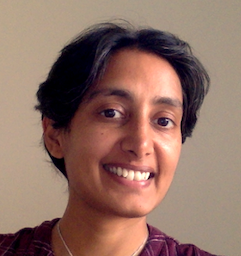Home
Welcome to the Triangle AI Book! This book provides a broad introduction to artificial intelligence, dotted with musings on cognitive science, society, technology, and the human condition.
If you are primarily interested in the parts of AI that have to do with data science, neural networks, and statistical machine learning, this book does briefly introduce these topics, but more specialized books will offer more depth (see Other Resources for some recommendations).
If you want to learn about the basic science of AI, and how we can use AI to understand and model different kinds of intelligences, then you will likely find something to enjoy in these pages.
The material is similar to what is covered in a typical intro AI course in an undergraduate CS program, but with a few twists. This book assumes undergraduate-level familiarity with coding, algorithms, probability, and calculus.
Table of contents
Introduction
Search
Constraint Satisfaction
Optimization
Supervised Learning
Unsupervised Learning
Sequential Decision Making
Reinforcement Learning
About me

Pandemic self haircut.
I am an assistant professor of computer science at Vanderbilt University. My lab does research in AI and cognitive science, with a focus on visuospatial reasoning, human learning, and autism and other forms of neurodiversity. We are also closely affiliated with Vanderbilt’s Frist Center for Autism and Innovation.
Much of my work falls in the AI research area of cognitive systems (like other AI areas for computer vision, robotics, natural language processing, etc.). Research in cognitive systems looks at how high-level, structured knowledge representations and reasoning processes can support intelligent behavior, often taking inspiration from what we know about human and animal intelligence.
I use the terms “AI person” and “AI people” to refer to those of us who have some kind of AI knowledge or expertise. After you finish reading this book, you will be an AI person too!
My trajectory as an AI person began while I was a math major at MIT, where I worked on path planning research with Nick Roy and also took my first AI courses with Patrick Winston. I then did a PhD in computer science at Georgia Tech, working on cognitive systems research with Ashok Goel, followed by a postdoc at Georgia Tech with Jim Rehg, where I meandered a bit into computer vision and machine learning. I have been a CS faculty member at Vanderbilt since 2016.
Acknowledgments and Dedication
This book incorporates perspectives about AI, cognitive science, and many other things from numerous colleagues and former teachers, including: Ashok Goel, Keith McGreggor, and Michael Helms (cognitive science and cognitive systems); Nancy Nersessian (philosophy of science and cognition & culture); Eric Schumacher (cognitive neuroscience); Rob Hampton and Joe Manns (comparative cognition); Linda Smith, Agata Rozga, and Rosa Arriaga (developmental psychology); Jim Rehg, Fuxin Li, and David Crandall (computer vision and machine learning); Keivan Stassun, Nilanjan Sarkar, Fred Shic, Brian Scassellati, and Gregory Abowd (topics at the intersection of technology and autism); and Isabelle Soulières, Michelle Dawson, and Laurent Mottron (cognition, autism, and neurodiversity).

Patrick Henry Winston (1943-2019): A teacher, mentor, and friend who captured my imagination long ago when he would pace around the front of the classroom and exclaim, “In AI, we are working to unlock the mysteries of the human mind!”
This book is dedicated to the memory and teachings of Patrick Winston, longtime AI professor at MIT and one of my most cherished mentors. Back in the day, I took Patrick’s 6.034 intro AI course and his 6xxx course on “The Human Intelligence Enterprise,” and I also enjoyed learning from his vast store of wisdom about communication, much of which is collected in his final book Make It Clear.
(Back in the spring of 2019, Patrick sent me a publisher’s proof of this book, which at the time was titled simply Communication. As I was carrying it from my office to my car, I started idly flipping through the first few pages. Before I knew it, I found myself sitting for the next three hours on a bench next to Vanderbilt’s football stadium to finish reading it. It is chock-full of Patrick’s usual captivating storytelling.)
From Lecture 1 in Patrick’s 6.034 introductory AI course.
Patrick often began his courses by talking about how he wanted to give students experience not just in “skill building” but also in the “big ideas” that form the intellectual foundations of a discipline. This book aims to do just that.
So, in addition to helping you learn specific AI skills (e.g., search algorithms, heuristics, constraint satisfaction, machine learning, etc.), this book will also introduce you to many big ideas about artificial and human intelligence, and our ongoing quest to “unlock the mysteries of the human mind.”
Open source contributors
This book is being written as an open-source project. Improvements and suggestions are welcomed via Github pull request:
Contributors are expected to abide by the Contributor-Covenant Code of Conduct.
Accessibility
I have done my best to make this book accessible to folks who might be using screen readers. However, if anyone finds any content that remains troublesome to access, please let me know! I welcome suggested improvements on this front.
Please leave any comments/suggestions on the Github issues list.
Page built: 2022-12-06 using R version 4.1.1 (2021-08-10)
 View source
View source